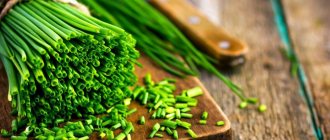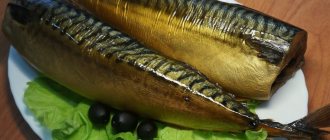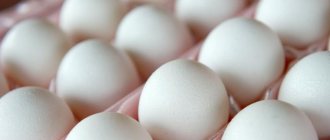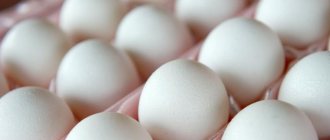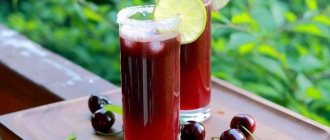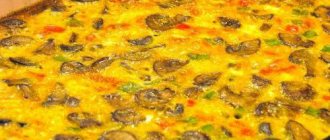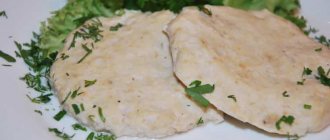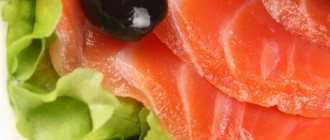The recognizable aromatic fruit, which can be found in any supermarket or market, comes from Southeast Asia. Its pulp is easily digestible, but the relatively high calorie content of banana is rejected by many in weight loss diets. In this article we will answer some questions, for example, how many calories are in a banana, whether these fruits can be used in weight loss diets. Let's talk in more detail about the nutritional value of the product and how many calories are in one medium banana. Let's compare how many kcal are in a banana per 100 grams without peel and per kilogram. And also - how many calories are in 100 grams of banana, based on the size and weight of the fruit.
Nutritional value of bananas (BJU)
In dietetics, one of the most important characteristics of the nutritional value of products is their ability to saturate the body with energy. It is determined by the amount of energy that a person receives when releasing food components during the process of digestion and assimilation. The abbreviation BZHU, or nutritional value, consists of three main elements, the content of which determines the energy value of the product. These are proteins-fats-carbohydrates.
The basis for calculating BZHU is 100 g of product (packaged or individually). In addition to the three elements, the energy value of the products is indicated in kJ, where 1 kcal is equal to 4.16 kJ, and also in kcal. Based on the BZHU, the daily calorie intake required for normal functioning and active human activity is calculated.
If we talk about banana BJU, then 100 g of ripe fruit pulp contains:
- proteins - 1.5 g;
- fat - 0.1 g;
- carbohydrates - 21.8 g;
- dietary fiber - 1.7 g.
When calculating BZHU, it is necessary to take into account the weight of the product.
The percentage of calorie content of a banana in 1 piece is proteins, fats, carbohydrates:
- proteins - 1.5%;
- fats - 0.5%;
- carbohydrates - up to 30%.
In addition to the importance of the question of how many kilocalories are in a banana, we also note the presence of 42 mg of magnesium and about 350 mg of potassium. Thanks to the combination of these elements, fruits quickly restore energy and vitality as a snack between meals. Considering the average calorie content in 1 piece of banana, it should be noted that it is able to compensate for the daily requirement of magnesium and potassium. Which, in turn, can be used to prevent myocardial infarction.
Another 100 g contains:
- vitamin A, provitamin A - approximately 2% of the daily requirement;
- beta-carotene is found more in red platano varieties, that is, vegetable varieties of the fruit;
- B vitamins, very important for muscle function, cholesterol removal and preventing the development of diabetes;
- vitamin C - about 11% of the daily requirement;
- vitamins E, PP;
- manganese - 14% of daily intake, important for immunity and good mood;
- the amino acid tryptophan, used by the body in the production of serotonin;
- zinc, selenium, fluorine, iron.
So, simple carbohydrates, sucrose, predominate in the pulp, and the proportion of complex carbohydrates does not exceed 8%. The remainder of the mass (>65%) is water.
Who benefits from bananas?
The chemical composition of these fruits determines their beneficial properties. In particular, you can outline the circle of people who especially need bananas. These are individuals who have been diagnosed with one of the following diseases [11]:
high blood pressure;- asthma;
- oncology (bananas prevent the development of leukemia in children, as well as the occurrence of colorectal cancer);
- cardiovascular diseases;
- diabetes mellitus (green bananas increase insulin sensitivity);
- diarrhea and other digestive disorders;
- absent-mindedness and memory impairment;
- obesity.
In addition, bananas are good for preventing kidney cancer, they protect the eyes from macular degeneration and strengthen bones by improving calcium absorption. These fruits are useful for children, as they increase learning ability [12]. The high antioxidant content of yellow exotics helps protect against free radicals. Many pregnant women save themselves from early toxicosis with the help of bananas. These same fruits will help lower your temperature during a fever.
The fruits are also useful for people who quit smoking, as they supply the necessary B vitamins, potassium and magnesium, which speed up the process of cleansing and restoring the body.
Calorie content 100 g without peel
Nutritionists answer the question of how many calories are in one banana, indicating the range of values: 66-111 kcal in peeled fruit (per 100 g). The average weight of a fruit imported to Russia is 200 g with peel, and the difference in the weight of individual fruits is from 150 to 250 g. The calorie content of 1 piece of banana without peel is calculated from the average weight of 140 g, and the peel weighs, respectively, 60 g.
Now it is more or less clear how calculations are made, how many calories are in 1 piece of banana - the greater the weight, the higher the calorie content. 60-65% of the pulp of the total weight of the fruit is taken into account. This rule only applies to fresh fruit. The energy value of dried candied fruits is measured differently. The calorie content of 1 banana comes mainly from carbohydrates (about 22%).
Banana diet recipes
There are a large number of dishes that include banana. Moreover, such dishes can be called dietary.
Cottage cheese casserole
What you will need:
- one banana;
- low-fat cottage cheese – 100 g;
- two eggs;
- oatmeal – 2 tbsp;
- salt to taste;
- vanilla optional.
How to do:
- Cut the fruit into thin pieces.
- Mix cottage cheese, two chicken yolks, and oatmeal in a bowl. At this stage, you can add salt and vanillin.
- Place baking paper on a baking sheet and place the resulting mixture on it.
- Place banana slices on top.
- The casserole takes about half an hour to prepare.
Banana candy
Sometimes during a strict diet you want to treat yourself to something tasty and sweet. Dietary banana candies will come to the rescue.
How to make them:
- Mash the bananas until smooth.
- Prepare walnut kernels.
- Form a ball of banana puree near the nucleolus.
- Dip the ball in honey.
- Sprinkle with coconut or nut crumbs.
Instead of dinner, you can just drink a banana smoothie. It will perfectly satisfy your hunger and at the same time promote weight loss.
Let's celebrate! To prepare it, you need to mix natural yogurt with one banana in a blender, add five berries (for example, strawberries or raspberries). If desired, you can add honey and nut crumbs. Sprinkle cinnamon on top.
How many calories are in fresh fruit (1 piece)?
As we said above, when calculating how many calories are in 1 banana, the average figure is given.
But if you consider that there are more than 100 varieties of edible fruits in this group, including vegetables (platano), then the indicator of how many calories are in one banana without peel may vary. When drawing up an appropriate diet, you need to decide on the variety, taking into account the difference in weight and size of the peeled pulp. Let's consider how many calories are in one banana, based on its size:
- In small - it differs from the variety called “mini”. To distinguish the fruit by size, a scale in cm is used - from 15 to 18 cm. How many calories are in one banana? Approximately 90 kcal.
- How many calories are in an average banana 18 to 20 cm long? This is the most common type of imported fruit. Its energy value reaches 111 kcal.
- In large ones - more than 20 cm long, the caloric value reaches 160 kcal.
- A mini banana is less than 15 cm long and has an energy value of 72 kcal. This is a special variety that can be found in abundance in markets in Thailand, India, and Burma. A cluster with dense fruit growth is characteristic.
How many calories are in half a banana? Calories can be easily calculated according to the above scheme, taking into account the weight of 1 fruit. Mango calories.
Thus, when determining how many calories are in an average banana, one must take into account the actual length of the fruit. The largest variety is considered to be “Saba” (also called Cardaba), but it can only be found in Asian countries.
How many kilocalories are there in a kilogram of product?
Let's make some rough calculations. We already know how many calories are in one medium-sized banana: from 66 to 111 kcal. If we take the average value of 88.5-89 kcal, then when recalculated per 1 kg of peeled fruit weight, we will find out how many calories are in a kilogram of bananas: up to 885-890 kcal.
Knowing the calorie content of 100 grams of banana, it is easy to calculate it per kilogram of product
Is there starch in banana fruit?
Many people are interested in the question of whether there is starch in bananas. Starch appears during the ripening stage. But as the fruit ripens, the starch content decreases and it is converted into sugar. If we consider the process of starch formation, it can be divided into three stages:
- In unripe fruit, starch is clearly visible, which can cause gas formation when consumed.
- There is practically no starch in a ripe fruit; it is converted into sugar. Therefore, the fruit is safe and perfectly absorbed by the body.
- The starch content in stale fruit is also insignificant. But provided that the fruit has passed the stage of ripening and has not rotted, being unripe.
A small amount of starch is indicated by a sweet taste. Unripe fruits with a large proportion of starch are almost tasteless and grass-like.
How to choose and store correctly
Since commercially grown bananas are often picked while still unripe, it is not surprising to see fruits with a greenish tint in stores. For this reason, you should choose fruits based on when you plan to eat them. Unripe fruits will take a few more days to fully ripen. The yellower the fruit, the shorter its shelf life. Proper bananas should be firm, but not too firm. In any case, the color should be bright, the skin smooth, without damage. The size of the fruit does not affect its taste.
And although bananas at first glance seem very durable, in fact they are fragile fruits that require special handling during storage. Greenish fruits should ripen at room temperature. In addition, you should not expose them to low temperatures. Many people like to store fruits in the refrigerator, but this is wrong. Bananas are quite heat-loving. And if an unripe fruit is sent to the refrigerator and then returned to room temperature, the ripening process will not resume. The only case when it is justified to keep bananas in the refrigerator is to prevent rotting of overripe fruits. And although their skin will still turn black, the flesh will remain dense and edible.
Some people prefer to freeze bananas. In this case, it is important to cold process only peeled fruits, wrapped in plastic wrap or crushed to a puree. To prevent discoloration after defrosting, it is important to add a little lemon juice before putting the pulp in the freezer.
But you can speed up the process of fruit ripening if you place them in a paper bag or wrap them in newspaper. But at the same time, it is necessary to “add” a neighbor to the bananas – an apple or a tomato [14]. By the way, ripe fruits are richer sources of antioxidants than unripe ones.
Glycemic index
The glycemic index (GI) reflects the effect of food entering the human body on blood glucose levels. The GI scale is measured in numbers, of which 0 are products without carbohydrates, and 100 are those with the maximum content of carbohydrates (or the so-called “pure glucose”). A high GI in terms of calories should not be perceived unambiguously negatively: such products release energy faster. Low glycemic index (low calorie) foods contain fiber that are digested slowly by the body without causing an increase in blood sugar.
Of course, the constant consumption of foods with a high GI against the background of little physical activity can cause various types of disorders, for example, body fat or diabetes. When it comes to how many calories are in a banana and how that relates to the glycemic index, the ripeness of the fruit comes into play.
Unripe ones have a GI of 42-44, ripe ones - 50, and overripe ones - up to 60 units. From which we can conclude that not only the question of how many kcal is in 1 banana is important, but also the GI of this product. As we can see, the fruit has an average GI, without causing a sharp increase in human blood sugar.
Possible hazardous properties
The fruits, eaten in moderation, do not cause any significant side effects. However, excessive consumption of exotic fruits (more than five bananas a day) can cause headaches and drowsiness. This is especially true for overripe bananas. In rare cases, they can cause hyperkalemia, an increased concentration of potassium in the blood. Eating sweet fruits too often is not good for your teeth - it leads to the destruction of enamel.
Bananas can cause one type of food allergy - the so-called latex-fruit syndrome. This disease is the result of an immune system reaction to proteins found in natural rubber and certain substances found in bananas. By the way, this type of allergy can also be caused by kiwi, papaya, tomatoes, potatoes and avocado.
Is it possible to eat at night?
It's amazing how a simple question still generates a lot of controversy. Proponents of a healthy diet do not recommend eating anything at all after 18.00. Fans of eating a banana breakfast in the morning claim that it gives them energy. On the other hand, young mothers are happy to give a banana to their babies before bed. This, they say, replaces higher-calorie porridge.
For people suffering from insomnia, the fruit is recommended an hour before going to bed because of its ability to normalize the emotional background and calm the nervous system. Let's leave the final choice to the consumer of this healthy and easily digestible fruit.
Banana diet for weight loss
Nutritionists are unanimous in their opinion that the average calorie content of 1 piece of banana for weight loss has a positive effect when taken. Moreover, such a calorie diet is suitable for both infants (8 months old) and the elderly.
The usual opinion that a banana is not suitable for a diet due to its calories is not supported by experts. After all, actual calculations of how many calories are in 100 grams of banana refute the idea that the product is high in calories. If you know how many calories are in 1 medium banana and how many fruits you need to eat per day to satisfy your hunger, then including this product in your diet will not lead to weight gain.
Finally, we note that the banana diet is not only healthy, but also nutritious. Due to the content of necessary elements during such a diet, the body does not need additional doping. Also, a person does not experience an acute feeling of hunger. The fruit is easily absorbed and digested, bringing satiety.
What are the benefits of bananas for men and women? Can I use them during pregnancy and breastfeeding?
Natural juice
Banana juice from the entire list is considered the least high in calories - 47 kcal per 100 grams. The great advantage of juice is that it retains the same beneficial substances found in fresh fruit. Therefore, if you do not want to gain weight and strictly follow a diet, then natural juice is the best option.
You can get a truly healthy and low-calorie product only with the help of a juicer. Store-bought juices, for the most part, contain about 30% puree, which makes their calorie content higher. In addition, they contain preservatives and large amounts of sugar.
150 g of natural banana juice per day will replenish your daily potassium requirement.
Energy value of dried candied fruits
Due to the fact that after drying the fruits lose water, which contains no calories (the pulp decreases in volume by about 5 times), the energy value of dried candied fruits increases. How many calories are in dried banana? 100 g of such a product, obtained industrially, contains up to 300 kcal. How many calories are in 1 piece of banana and the resulting chips? The energy value ranges from 480 to 530 kcal (due to the palm oil content used for frying). Therefore, chips cannot be recommended for weight loss diets. But dried candied fruits are acceptable, although more as an exquisite delicacy.

